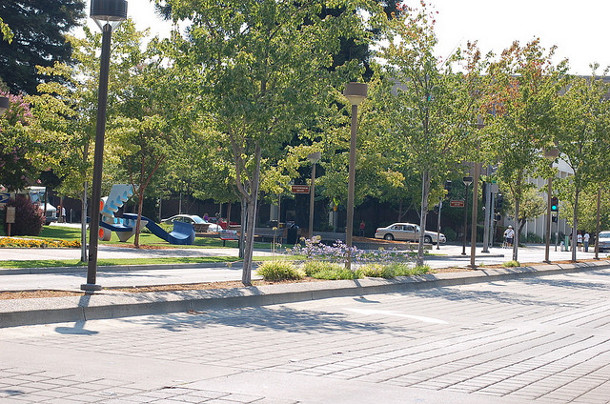Are Landscape Architects & Engineers Frenemies?
Back in Fall 2011, the Ontario Association of Landscape Architect’s publication, Ground Magazine (page 8), published an article titled “Best Friends/Worst Enemies: Landscape Architects and Engineers,” by Adam Nicklin and Victoria Taylor. This article started an insightful discussion on the similarities and differences between landscape architects and engineers. Some of the essential differences they point out are:
| Engineers | Landscape Architects | |
| Strengths | - Very pragmatic - Good at building things and making something function | - Adept at presenting ideas and capturing the imagination of someone quickly - Good at telling a simple story about how the thing works and comparing it to other options |
| Deliverable | Large report you have to really sift through to get the gist | Cuts to the chase |
| Typical approach | Compartmentalized: focused on fixing the problem at hand | Holistic: look at the whole picture, what is the best overall solution looking at the big picture; eg look at consequences of potential design decisions on social and environmental context |
| Willingness to try new approaches | Often want to do the same proven things over and over | Often want to do something different |
| Liability | Higher than landscape architect | Lower than engineer |
Personally, I have found these differences become especially stark when it comes to designing trees as stormwater infrastructure. Yet while these differences can indeed make it frustrating for the two disciplines to work together, designing trees as stormwater infrastructure is a great example of why we also need each other. Successful design of trees as stormwater infrastructure requires a collaborative, holistic approach that can satisfy the needs of both specialties.
Treating stormwater with pipes alone is the way “it was always done” in the past – until it became apparent that this approach was (a) not financially feasible anymore, (b) not totally solving the problems the pipes were intended to solve, and (c) that using pipes alone was actually creating other problems off-site. As stormwater treatment approaches have evolved over time, more and more holistic approaches are being used to treat stormwater, and it is becoming more and more valuable to look at the big picture.
Here are a few examples of the big picture, holistic thinking I believe we need to successfully design trees for stormwater:
• Designing tree spaces that allow trees to grow large in challenging urban environments, requires looking at the tree’s whole environment: e.g. climate and microclimate, utilities, soil quality, soil biology, soil volume, human uses around trees, wildlife impacts, etc.
• Evaluating the true costs and benefits of using large trees as green infrastructure, requires understanding the city’s physical/structural, social, climatic, hydrological, and ecological context, as well as its energy use patterns, etc.
• Evaluating hydrologic impacts/benefits of using trees as green infrastructure requires understanding tree biology, soil, tree growing conditions, context within watershed, and how the tree and its environment change over time, etc.
All sound very complex? That’s where landscape architects’ skills to cut to the chase and clearly, concisely compare different options come in really handy. And, in order to make sure it will all work, we need the problem solving, analytical skills of engineers.
Of course, I know plenty of engineers who are great communicators and love to think out of the box, as well as landscape architects who are good problem solvers with analytical minds. Stereotypes are just stereotypes. But, no matter how often or seldom these stereotypes really apply, collaborative skill sets will be invaluable for projects that use trees as stormwater infrastructure. And in many cases we will need more than just landscape architects and engineers.
Nathalie Shanstrom is a landscape architect with the Kestrel Design Group. She specializes in sustainable design.

